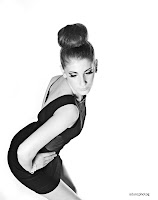This is my favourite part of photography if you can tell a story as well as artistically producing a great shot you have a winner. The above shot in Venice is mixing old with new, I found it really funny that the Gondola man was on his mobile phone whilst dressed in such an old fashioned, traditional way.
Love this shot of the two fathers of the bride and groom enjoying a joke on their children's big day, they teased each other all day.
This was a gem of a wedding as some of the bridesmaids were poodles, if you look closely at this photo not one person or animal is looking at the camera priceless !! I find the photographs that I remember most are the ones that tell a story and an image is so much more powerful than words.
















